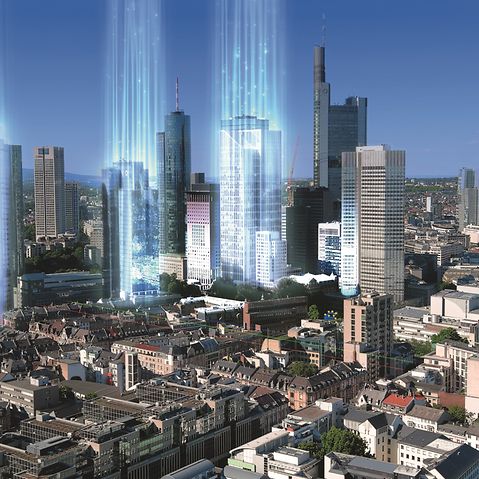
Recycling is a major factor when it comes to achieving climate neutrality. It has huge potential for reducing CO₂ – by up to 23% by 2030 and as much as 60% by 2050. This means the recyclability of all the materials used for the building envelope should always be taken into consideration for both new builds and renovation projects.
Making full use of maximum extended unit life and recycling potential
Every building that is built from now on must meet strict sustainability requirements and circular economy criteria in order to remain sustainable and future-proof in the long term. One key factor in successful CO₂ reduction is the optimum recyclability of installed materials, so that they can be reused at the end of their material lifespan. Aluminium as a material has particularly high potential here. Aluminium is a versatile material that can be recycled over and over again with comparatively low CO₂ emissions – making aluminium a sustainable recycled material in the long term.
However, building and building envelope units such as the façade are only truly sustainable if they can be used for a long period of time. This can be achieved through regular maintenance and, when required, upgrading or retrofitting of the individual components. Only once all options for continued operation of the respective unit have been exhausted does it make sense to recycle its individual components. The building is then available for reuse through urban mining as the ‘raw material warehouse of the future’.
Cradle to Cradle-certified systems
Cradle to Cradle-certified systems make a decisive contribution to the reuse of aluminium. The materials are separated and the recyclable material is shredded and melted down before reuse. This means windows and doors at the end of their useful life can be fed back into the A/U/F loop (Aluminium und Umwelt im Fenster- und Fassadenbau – aluminium and the environment in window and façade construction), reducing the need for newly manufactured aluminium for façade constructions.
With 76 currently certified systems, Schüco is one of the Cradle to Cradle pioneers in the building sector. Schüco is also committed to a sustainable aluminium industry and creating binding sustainability standards. As a reward for this commitment, Schüco is one of the first companies in the building sector to be certified in accordance with the internationally recognised Chain of Custody Standard by the Aluminium Stewardship Initiative (ASI).
A small sticker with a big impact:
Digitalisation of the building envelope with IoF (Internet of Façades)
In order for these raw materials to be prepared quickly for reuse, it is vital to know which components of a unit can be recycled and to what extent. This information must therefore be documented immediately for newly installed units, be available to simplify the execution of maintenance work throughout its entire useful life and be called up during the dismantling process, even decades after the building was constructed.
Schüco assigns a unique digital identity to each unit with the Internet of Façades (IoF) ID in order to make all important data accessible quickly. The IoF ID is a small tag that is stuck to the installed Schüco windows and doors. For example, you can use the IoF ID to call up information on your smartphone about the installed parts, your warranty claims, maintenance history or recycling options for the materials and components in use. The IoF ID also simplifies service requests for unit repairs, maintenance and upgrades.
The saved information helps increase the service life of the units marked with an IoF ID, facilitates ongoing sustainable operation and makes dismantling easier for decades, as it provides exact details of which recyclable materials are installed in the building in what quantity.